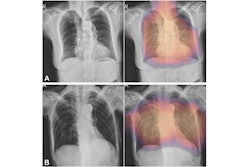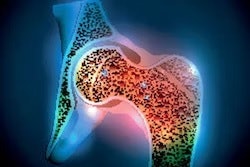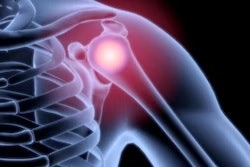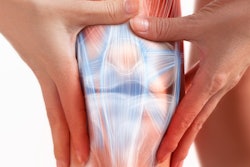
Major gaps exist in the current state of bone care for joint replacement patients, including low rates of dual-energy x-ray absorptiometry (DEXA) testing for osteoporosis, according to a study published April 18 in the Journal of Arthroplasty.
Researchers looked at metabolic bone care in total joint arthroplasty (TJA) patients in two different risk groups across a wide time range. Among high-risk patients undergoing TJA, they found that 88% did not receive bone density testing during routine care.
Moreover, 90% did not receive any pharmacological treatment for osteoporosis, and 45% did not receive basic treatment with vitamin D or calcium, according to the findings.
"Metabolic bone diseases in the [TJA] population are undertested and undertreated, leading to increased risk of adverse outcomes," wrote a group led by senior author Dr. Joseph Lane, an orthopedic surgeon at Hospital for Special Surgery in New York City.
Total hip arthroplasty and total knee arthroplasty are among the most common orthopedic procedures in the U.S., with more than 1 million of the surgeries performed each year. Osteoporosis, which is diagnosed primarily by testing bone mineral density on DEXA scans, is a known major risk factor for complications, such as fractures associated with the implants.
Despite official recommendations to the contrary, evidence suggests that patients with osteoporosis who undergo TJA are undertested and undertreated, but the issue remains understudied, according to the authors.
In this analysis, the researchers performed retrospective chart reviews of 250 total hip replacements and 255 total knee replacements at their tertiary-care center between January and March 2019. All patients met guidelines from the Endocrine Society for osteoporosis screening.
Patients were divided into high-risk (n = 291) or low-risk groups (n = 214) based on Fracture Risk Assessment Tool (FRAX) scores, which indicate fracture risks. Patients were then compared based on screening, diagnosis, and treatment.
During the routine care period, 7.5% of the low-risk patients and 12.4% of the high-risk group received at least one DEXA scan, according to the findings. During the surgical period, just 0.5% of the low-risk group and only 2.4% of the high-risk group received DEXA scans.
In addition, for patients who received DEXA scans, the average time lapse between routine scans to the date of the operation was three years for the low-risk group and three-and-a-half years for the high-risk group.
"The screening gap we demonstrated indicates that [bone mineral density] measurement is not a standard of care in the current clinical environment for TJA patients," the researchers wrote.
Besides low screening rates, the researchers also found that TJA patients have low rates of treatment. Only half of all patients in both the high- and low-risk osteoporosis groups received vitamin D and calcium treatment during the routine care or the surgical care period, the authors wrote.
Ultimately, the low rates of screening and treatment suggest there may be financial barriers or structural rigidities that prevent patients from accessing appropriate metabolic bone care, the authors suggested.
"Metabolic bone care and risk identification should be highly considered for TJA patients, and awareness of metabolic bone diseases among this patient population should be increased," Lane and colleagues concluded.




















